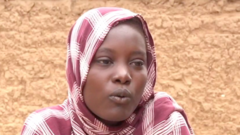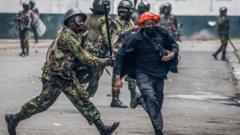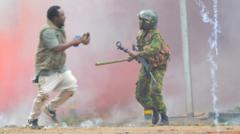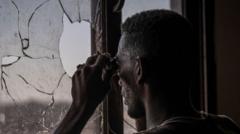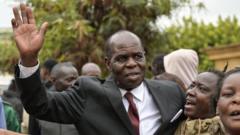Senait Mebrehtu mourns her daughter, Hiyab, who drowned while attempting to migrate to Kenya. As smuggling routes evolve, individuals like Senait face the consequences of perilous crossings. Human traffickers continue to exploit the desperate circumstances of migrants fleeing Eritrea.
Heartbreak and Resilience: A Mother's Grief Amidst Migrant Smuggling in Kenya
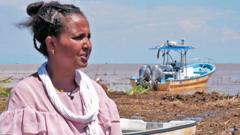
Heartbreak and Resilience: A Mother's Grief Amidst Migrant Smuggling in Kenya
The tragedy of a young life lost underscores the perilous journey many Eritrean migrants undertake, as families grapple with the consequences of human trafficking and seek safety.
As the sun dipped beneath the horizon over Lake Turkana, Senait Mebrehtu, a grieving mother from Eritrea, paid tribute to her 14-year-old daughter, Hiyab, who tragically drowned last year during a perilous attempt to reach Kenya. Senait made the journey to the western shores of Lake Turkana, reflecting on her loss and the reckless smuggling network that put her daughter's life at risk.
Having sought refuge in Kenya three years ago due to religious persecution, Senait was only able to migrate with her younger children. The plight of her two elder daughters led to their desperate decision to enlist the help of smugglers, seeking a safer future but ultimately facing unimaginable tragedy. Hiyab tragically lost her life as she attempted to cross the vast and treacherous lake with her sister, who managed to survive by clinging to the capsized boat until rescuers arrived.
Senait's harrowing recollection brings to light the realities of human trafficking, where smugglers overload small boats with migrants—often driven by desperation—and disregard their safety. A female smuggler, operating anonymously, acknowledged that Lake Turkana has become an increasingly popular route for those riskily flowing into Kenya. Noting that many migrants are informed by prompts on social media, she admitted the dangers inherent in this new route.
Osman, a fellow Eritrean refugee who witnessed the tragedy firsthand, described the ill-fated crossing, underscoring how Hiyab's boat encountered mechanical failure against a powerful wind. Tragically, overloaded with over 20 people, their boat capsized not long after departure, resulting in a disastrous outcome.
Senait firmly blamed the smugglers for the negligent behavior that led to the disaster, lamenting the dangerous conditions and the overwhelming numbers they knowingly placed on inadequate vessels. Local fishermen have reported the grim discovery of bodies believed to be migrants, highlighting the constant fatalities associated with these treacherous journeys.
Many fleeing Eritrea face dire circumstances, trapped in a militarized regime, prompting their flight to neighbor states like Kenya amidst ongoing regional conflicts. Mula Berhan, an Uganda-based lawyer, noted the increased influx of Eritrean migrants, particularly towards Kenya and Uganda, as crises in Ethiopia and Sudan deepen.
While some migrants aspire to settle in Kenya, others view it merely as a transit country en route to further destinations like Uganda, Rwanda, or even Europe. The scale of human smuggling activities emphasizes the desperation felt by many and the exploitation that follows, with smugglers profiting significantly from the journeys—often exceeding thousands of dollars, while migrants find themselves trapped in dismal conditions.
Inside makeshift holding houses where migrants are kept, dire situations unfold as individuals struggle to meet rent and basic needs. The smuggler admitted that some lose lives due to neglect while agents conceal these deaths from grieving families, perpetuating a cycle of heartbreak.
For Senait, although her daughter’s tragic fate remains raw, gratitude for her younger daughter’s survival mingles with her grief. "We have gone through what every Eritrean family is enduring," she expressed. As she casts flowers into the lake, her poignant declaration illustrates the shared struggle of countless families entangled in the web of migration and smuggling.
Senait's story and others like it shine a spotlight on the need for compassion, advocacy, and systemic changes to address the humanitarian crises facing migrants in East Africa while keeping the memory of those lost alive.


